
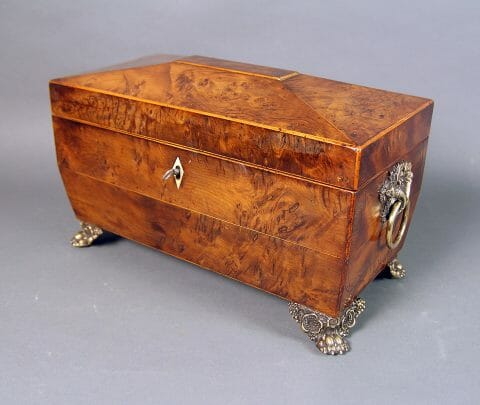
Nestled in the heart of the Cotswolds, Clive Payne Antiques & Restoration has been a cornerstone for antique enthusiasts and collectors since its establishment in 1986. With a commitment to preserving the rich heritage of period furniture and a passion for Mason’s Ironstone China, Clive Payne and his team of skilled craftsmen offer unparalleled expertise in restoration and conservation.
For nearly four decades, Clive Payne has dedicated himself to the meticulous restoration of furniture from the 17th and 18th centuries. His workshop, located at Unit 11, Langston Priory Workshops in Kingham, Oxfordshire, is a testament to traditional craftsmanship. The team employs time-honoured techniques and the finest materials to ensure that each piece retains its historical integrity while being restored to its former glory.
Clive Payne Antiques & Restoration offers a wide array of services tailored to meet the unique needs of each client:
Conservation Work: Preserving the original character and patina of antique pieces, ensuring their longevity for future generations.
Traditional Hand Finishing: Utilising age-old methods to achieve authentic finishes that reflect the period of the piece.
Marquetry and Inlay: Restoring intricate designs with precision, honoring the original craftsmanship.
Leather Restoration: Repairing and rejuvenating leather components to their original condition.
Lock Repairs and Key Restoration: Specialising in the restoration of antique locks and the creation of bespoke keys, including the intricate kidney bow keys.
Veneering and Upholstery: Expertly handling delicate veneers and providing traditional upholstery services to restore comfort and aesthetics.
Carving and Turning: Reproducing missing or damaged wooden elements with meticulous attention to detail.
Rush and Cane Work: Restoring woven elements of furniture to their original splendour.
Castings and Bespoke Furniture Making: Creating custom pieces and components that seamlessly blend with existing antiques.
Each project is approached with a deep respect for the piece’s history, ensuring that restorations are sympathetic and authentic.
Beyond furniture restoration, Clive Payne is renowned as a leading specialist dealer in Mason’s Ironstone China. His showroom boasts an extensive collection of over 400 items, ranging from dinner and dessert wares to vases, platters, bowls, tureens, and jugs. Collectors and enthusiasts can explore a diverse array of patterns and designs, each piece reflecting the rich history of this esteemed ceramic.
Introduced in the early 19th century by the English manufacturer Mason’s, Ironstone China is celebrated for its durability and elegant designs. Authentic pieces are characterised by their dense, durable material, smooth and glossy finish, and intricate patterns applied through transfer printing techniques. Collectors are advised to look for clear, well-defined marks that include variations of the name “Mason” and often the term “Ironstone” or “Patent Ironstone.” Familiarity with these hallmarks and an understanding of the material’s weight and thickness are essential in distinguishing genuine pieces from reproductions.
As a proud member of the British Antique Furniture Restorers’ Association (BAFRA) and LAPADA, Clive Payne adheres to the highest standards of professionalism and ethics in the antique trade. Clients can trust in the authenticity and quality of the services and items offered.
Visitors are welcome to explore the showroom and workshop during the following hours:
Monday to Friday: 10:00 am – 5:00 pm
Other times: By appointment only
For inquiries or to schedule a visit outside regular hours, please contact:
Phone: +44(0)1608 658856
Mobile: +44(0)7764 476 776
Email: enquiries@clivepayne.com
Stay connected and discover the latest additions to the collection by following on Instagram: @clivepayneantiques.
Whether you’re a seasoned collector, a homeowner seeking to restore a cherished piece, or simply an admirer of fine antiques, Clive Payne Antiques & Restoration offers a wealth of expertise and a commitment to excellence that ensures your antiques are preserved and celebrated for years to come.
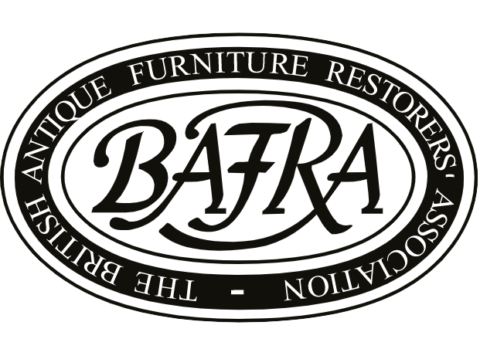
Being a member of the British Antique Furniture Restorers’ Association (BAFRA) is a prestigious distinction that signifies a commitment to the highest standards of craftsmanship, ethics, and professionalism within the world of antique restoration. As an established business in the antique restoration industry, Clive Payne has witnessed first-hand the value of BAFRA membership and what it means for both the business and its clients. For us, being part of BAFRA is not just a badge of honour; it is a testament to our dedication to preserving the integrity of historical furniture while providing exceptional service to our customers.
BAFRA is a recognised body within the United Kingdom, focused on promoting and upholding the best practices in the restoration and conservation of antique furniture. Membership in BAFRA is not easily attained, as the association maintains stringent criteria for admission, ensuring that only highly skilled and reputable professionals are part of its ranks. For Clive Payne, this membership is a mark of credibility and expertise, allowing us to differentiate ourselves in a competitive market.
One of the primary benefits of being a member of BAFRA is the access to a network of like-minded professionals. This network is invaluable, providing opportunities for collaboration, knowledge exchange, and continued professional development. Through BAFRA, we stay up to date with the latest restoration techniques, materials, and industry trends. This knowledge enables us to offer the best possible service to our clients, ensuring that every piece of antique furniture entrusted to us receives the highest level of care and attention.
At Clive Payne, we take pride in our ability to restore furniture to its original beauty while respecting its historical value. BAFRA membership plays a crucial role in this process, as the association sets out clear guidelines for ethical restoration practices. These guidelines ensure that restorers do not compromise the authenticity of a piece by overzealously altering its appearance or structure. Instead, we focus on careful conservation techniques that maintain the original character of the furniture while ensuring its functionality and durability for future generations.
As BAFRA members, we adhere to the association’s code of ethics, which emphasises transparency, honesty, and integrity in all aspects of our work. This code ensures that our clients are always informed about the restoration process and the materials being used. Whether we are restoring a Georgian chest of drawers or a Victorian armchair, we work closely with our clients to ensure that their expectations are met while maintaining the integrity of the piece. This level of transparency builds trust and helps foster long-term relationships with our customers.
The world of antique furniture restoration is constantly evolving, with new techniques, tools, and materials emerging regularly. As a member of BAFRA, Clive Payne benefits from ongoing training and professional development opportunities. BAFRA offers access to workshops, seminars, and courses that allow us to refine our skills and stay at the forefront of the restoration industry. This commitment to continuous learning is crucial in maintaining the high standards we set for ourselves and ensuring that we can tackle even the most complex restoration projects with confidence.
Moreover, BAFRA provides a platform for networking with other restoration professionals, enabling us to share knowledge and learn from one another. Whether it is discussing the best methods for repairing wood or exploring innovative techniques for reupholstering antique furniture, being part of BAFRA allows us to collaborate with some of the best minds in the industry. This sense of community is invaluable, as it encourages us to constantly improve and refine our craft.
Ethical restoration is a cornerstone of our work at Clive Payne, and it is one of the core principles upheld by BAFRA. The association’s emphasis on preserving the original integrity of antique furniture aligns with our own philosophy. We believe that restoration should be a delicate balance between returning a piece to its former glory and respecting its historical significance. Over-restoring or altering a piece too drastically can strip away its character and value, which is why we approach each project with a great deal of care and respect.
BAFRA’s guidelines on ethical restoration ensure that all members follow a consistent approach to conservation. This is especially important in a field where the value of a piece is often tied to its authenticity. By following BAFRA’s ethical standards, we are able to provide our clients with peace of mind, knowing that their treasured antiques are being treated with the utmost care and respect.
At Clive Payne, our reputation is built on trust, quality, and craftsmanship. Being a member of BAFRA has played a significant role in establishing this reputation. As a recognised and respected organisation, BAFRA’s endorsement lends credibility to our business and assures our clients that they are working with a professional and reliable restoration service. In an industry where trust is paramount, BAFRA membership provides an added layer of assurance that we are committed to upholding the highest standards of workmanship and ethics.
Our clients often seek our services because they value the history and heritage of their furniture. They trust us to restore their beloved pieces in a way that preserves their story while ensuring they can continue to be enjoyed for years to come. Being part of BAFRA strengthens this trust, as clients know that we are bound by a strict code of conduct and a commitment to excellence.
For Clive Payne, being a member of the British Antique Furniture Restorers’ Association is more than just a professional affiliation; it is a reflection of our dedication to preserving the craftsmanship and history of antique furniture. BAFRA membership not only enhances our credibility and reputation but also provides us with the tools, resources, and network necessary to continue delivering exceptional restoration services. It is an honour to be part of such a prestigious organisation, and we look forward to continuing our journey of craftsmanship, ethical restoration, and professional development as proud members of BAFRA.
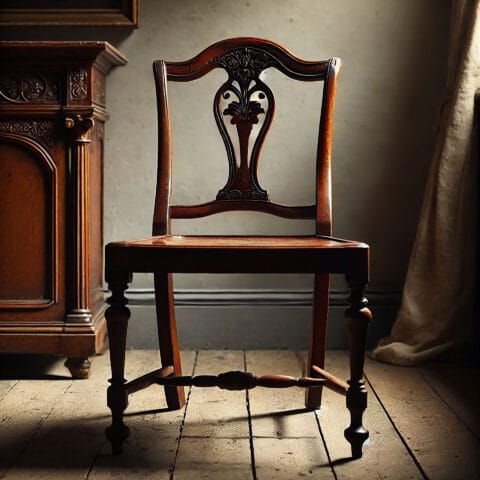
Antique furniture holds timeless charm and craftsmanship that speaks to generations past, but it also requires careful maintenance to preserve its beauty and functionality. Among the common issues that arise with antique wood furniture is warping. Warped wood not only disrupts the piece’s aesthetic appeal but can also compromise its structural integrity. Understanding how to repair warped wood and prevent it from occurring in the first place is crucial for any antique enthusiast or restorer.
Warping occurs when wood absorbs or loses moisture unevenly, leading to changes in its shape. The primary culprits are fluctuations in humidity and temperature, which cause wood fibres to expand or contract. Over time, these environmental stressors can distort flat surfaces, bend structural components, or create unsightly cracks.
Antique furniture is particularly susceptible to warping because the wood has already aged and may have lost some of its natural resilience. Original construction techniques, like hand-planing and uneven seasoning, may also contribute to a piece’s vulnerability.
The ideal humidity range for wood furniture is between 40-60%. Fluctuations outside this range can cause the wood to swell (in high humidity) or shrink (in low humidity).
– Use a dehumidifier or humidifier to regulate the air in your home, especially during seasonal changes.
– Place antique furniture in rooms with stable environmental conditions, away from windows, fireplaces, or air vents.
Sudden temperature changes can stress wood fibres. Keep antique furniture in areas with consistent temperatures, ideally between 60-80°F (15-27°C). Avoid placing pieces near heat sources like radiators, direct sunlight, or stoves.
Avoid placing antique furniture in basements, attics, or garages, where environmental conditions are harder to control. These areas often have higher humidity and greater temperature fluctuations.
Applying a thin layer of furniture wax or oil can act as a barrier against moisture. Be cautious to use products that are compatible with antique finishes to avoid altering the piece’s appearance or value.
Elevate furniture slightly off the floor using felt pads to allow proper air circulation. For items stored against walls, ensure there is at least a small gap for ventilation.
If warping has already occurred, it’s possible to restore the wood to its original form using careful techniques. However, repairs should always aim to maintain the integrity and historical value of the piece.
While minor warping can be addressed at home, more severe cases may require a professional antique furniture restorer. Structural damage, such as compromised joints or significant distortion, needs expertise to ensure the piece’s historical integrity is preserved. A professional, like Clive Payne, can also assess whether the warp affects the value or authenticity of the furniture.
Antique furniture represents a beautiful link to the past, and maintaining it is both a privilege and a responsibility. Warped wood is a common but manageable issue if addressed early and carefully. By understanding the causes of warping and implementing preventative measures, you can extend the life of your treasured antiques. For pieces already affected, thoughtful repair techniques can restore their form and function, ensuring these timeless objects remain part of your home for generations to come.

18th-century antique furniture is celebrated for its refinement, craftsmanship, and its reflection of the social and artistic movements of the period. Spanning the reigns of the Hanoverian kings, including George I, George II, George III, and the early years of George IV, the 18th century saw a shift in design, with furniture evolving to reflect the tastes of an increasingly wealthy and sophisticated society. In this article, we will explore the defining characteristics, popular styles, materials, and evolution of 18th-century furniture, as well as why it remains a highly valued and admired category of antiques today.
The 18th century was a time of great change in the world of furniture design, influenced by a combination of historical events, economic growth, and technological advances. The period saw the rise of the Georgian style, which emphasized proportion, symmetry, and fine craftsmanship. Furniture design during this time reflected the Enlightenment ideals of balance and order, as well as the growing influence of classical architecture and design principles.
With the expansion of the British Empire and increased trade, exotic woods and materials became available, which, combined with advances in craftsmanship and the rise of professional furniture makers, led to the production of high-quality furniture that appealed to the growing upper class. Wealthy landowners, merchants, and aristocrats began to furnish their homes with pieces that reflected their status, leading to a greater emphasis on both functionality and decoration.
1. Queen Anne (1700–1740): The Queen Anne style marked the early part of the 18th century, and it is known for its elegant, understated beauty. Furniture from this period often featured soft, rounded shapes with graceful lines, in contrast to the heavier, more ornate styles of earlier periods. Legs were typically cabriole (curved and elegant), and chairs and tables often had upholstered seats. Wood choices were typically walnut, maple, or cherry, and pieces were often finished with delicate details such as inlay or marquetry. Queen Anne furniture emphasized comfort as much as style, with chairs and settees having deeply upholstered seats and backs, making it both functional and aesthetically pleasing.
2. Rococo (1730–1770): The Rococo style, which evolved from the Baroque period, brought a more ornate and playful approach to furniture design. This style was influenced by French decorative arts and introduced intricate carving, asymmetry, and delicate, flowing shapes. Rococo furniture often featured curved lines, floral patterns, and elaborate scrollwork, with designs inspired by nature, including leaves, flowers, and shells. Materials such as lacquered wood, gilt bronze mounts, and rich fabrics like silk and velvet were commonly used. Pieces from this style include chairs, tables, and mirrors, all marked by the graceful yet exuberant ornamentation that defined the Rococo movement.
3. Chippendale (1750–1790): Named after the famous cabinetmaker Thomas Chippendale, the Chippendale style was one of the most influential and enduring in 18th-century furniture design. It is known for its variety of forms, which include Rococo, Chinese, Gothic, and Neoclassical influences. Chippendale furniture featured graceful curves, intricate carvings, and attention to detail. Popular materials for Chippendale pieces included mahogany, which was prized for its fine grain and deep color. Iconic Chippendale pieces include chairs with fretwork splats, elaborately carved sideboards, and delicate writing desks. The style was also known for its fine craftsmanship, with Chippendale’s own designs becoming highly sought after by both wealthy aristocrats and the emerging middle class.
4. Hepplewhite (1775–1800): The Hepplewhite style, named after the cabinetmaker George Hepplewhite, emerged in the latter part of the 18th century. It is characterized by its simple, clean lines and graceful proportions, with an emphasis on symmetry. Hepplewhite furniture often incorporated shield-shaped backs on chairs, delicate carvings, and fluted or tapered legs. The style drew inspiration from classical antiquity, with motifs such as urns, garlands, and ribbons. Hepplewhite furniture was often made from mahogany, and its light, airy aesthetic made it especially popular for more formal, restrained interiors. The style also featured the use of inlays and marquetry, particularly in the creation of sideboards, desks, and console tables.
5. Neoclassical (1770–1820): The Neoclassical style, which was influenced by the rediscovery of ancient Greek and Roman art and architecture, became a dominant trend in the late 18th century. Furniture pieces in this style emphasized straight lines, symmetry, and classical motifs, such as fluted columns, urns, and laurel wreaths. Materials like mahogany and satinwood were frequently used, often with fine detailing such as gilt accents or inlays of contrasting wood. Neoclassical furniture was typically less ornate than Rococo pieces but had a dignified, refined elegance. The Neoclassical style is seen in the work of renowned cabinetmakers like Thomas Sheraton, whose designs are characterized by their clean lines, elegant proportions, and fine craftsmanship.
Furniture in the 18th century was typically crafted from high-quality hardwoods, including walnut, mahogany, oak, and maple. These woods were prized for their strength, color, and durability. Mahogany, in particular, became highly sought after during the latter part of the century due to its rich, reddish-brown color and fine grain, which made it ideal for fine furniture.
In addition to wood, 18th-century furniture makers often incorporated exotic materials such as lacquer, ivory, and brass. Some furniture, particularly in the Rococo and Chippendale styles, was adorned with gilded bronze mounts or fine carvings. Upholstery was typically made from luxurious fabrics like silk, velvet, and damask, and was often hand-stitched to ensure a high level of craftsmanship and durability.
The use of inlay and marquetry—intricate designs made from small pieces of contrasting wood—was another hallmark of 18th-century furniture. Cabinetmakers would often use this technique to create stunning patterns on tables, desks, and chests, showcasing both their skill and attention to detail.
The timeless appeal of 18th-century furniture lies in its elegance, craftsmanship, and historical significance. The furniture of this period remains highly valued by collectors, designers, and antique enthusiasts for several reasons. First, the quality of craftsmanship and attention to detail in 18th-century pieces is unmatched, with furniture makers of the era creating highly refined and functional works of art.
Second, the variety of styles available ensures that there is something for every taste, whether it is the graceful curves of Rococo, the elegance of Neoclassical design, or the refined lines of Hepplewhite. The quality of the materials used—particularly mahogany and walnut—ensures that many 18th-century pieces have survived in excellent condition and continue to be cherished today.
Finally, 18th-century furniture offers a tangible connection to the past, allowing collectors to appreciate the history, culture, and artistry of the period. Whether used as functional pieces in a modern home or as decorative antiques, 18th-century furniture continues to inspire admiration for its timeless beauty.
18th-century antique furniture reflects the grace and refinement of a pivotal period in design history. From the early Queen Anne and Rococo styles to the later Chippendale, Hepplewhite, and Neoclassical pieces, the furniture of the 18th century remains a testament to the skill and craftsmanship of the time. As highly collectible items, these antiques continue to captivate collectors and designers alike, offering a glimpse into the elegance of a bygone era.
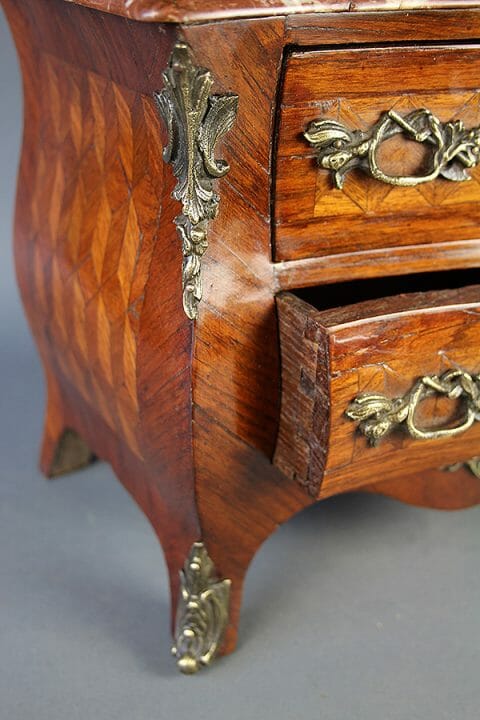
Antiques, often cherished for their history and aesthetic appeal, carry stories of the past that are woven into their very fabric. One of the most vital aspects of maintaining and restoring these pieces is traditional hand finishing. This meticulous process not only enhances the beauty of antiques but also preserves their authenticity and value. This article delves into the techniques, benefits, and significance of traditional hand finishing in the world of antiques.
Traditional hand finishing involves a series of skilled techniques applied to antiques to enhance their appearance, restore their integrity, and protect their surfaces. Unlike modern finishing methods that rely heavily on industrial processes and machinery, hand finishing is rooted in artisanal craftsmanship, relying on the skill, patience, and expertise of individual craftsmen.
1. Preparation of the Surface
The first step in hand finishing is surface preparation. This process involves cleaning the antique to remove dust, dirt, and any previous finishes that may have accumulated over the years. Craftsmen often use soft cloths, brushes, and specialised cleaning solutions that are gentle enough to avoid damaging the underlying material.
After cleaning, the surface is inspected for any repairs that may be necessary. This can include filling in cracks, repairing joints, or replacing missing elements. Each of these repairs is executed with careful attention to detail, ensuring that the integrity and character of the piece are preserved.
2. Application of Finishing Techniques
Once the surface is prepared, craftsmen can begin the hand finishing process. Various techniques may be employed, depending on the type of antique and the desired outcome.
French Polishing: One of the most traditional methods of finishing wooden antiques is French polishing. This technique involves applying layers of shellac using a soft pad, often made from cloth and wool. The craftsman rubs the pad in circular motions, gradually building up a deep, glossy finish. French polishing enhances the natural beauty of the wood grain and provides a protective layer.
Varnishing: Varnishing is another common technique used in hand finishing. Unlike French polish, which is a shellac-based finish, varnish provides a more durable and weather-resistant coat. Craftsmen apply varnish with a brush, ensuring even coverage and a smooth finish. Multiple coats may be applied, with light sanding between each to achieve a flawless surface.
Staining: For some antiques, staining is an essential part of the finishing process. Craftsmen use stains to enhance or change the colour of the wood, bringing out the richness of the grain and complementing the overall aesthetic. Hand-staining allows for greater control and creativity, enabling restorers to achieve the desired hue while maintaining the piece’s authenticity.
Waxing: After the application of varnish or shellac, waxing is often the final step in the finishing process. A natural beeswax or furniture wax is applied to the surface, providing a soft sheen and additional protection. Waxing can also help to hide minor imperfections and enhance the tactile quality of the piece.
The process of traditional hand finishing offers several significant benefits that contribute to the longevity and value of antique pieces.
1. Preservation of Authenticity
Hand finishing respects the original craftsmanship of the antique, preserving its historical integrity. Modern finishing methods may alter the character of a piece, while traditional techniques maintain its authenticity. This adherence to original craftsmanship is crucial for collectors and historians who value the story and heritage behind each antique.
2. Enhanced Aesthetic Appeal
Hand finishing techniques enhance the visual appeal of antiques, bringing out the natural beauty of the materials used. The skillful application of finishes can highlight intricate carvings, reveal the depth of wood grain, and impart a sense of warmth and richness that factory finishes often lack.
3. Increased Longevity and Protection
Proper hand finishing provides a protective layer that guards against dust, dirt, moisture, and other environmental factors. This protective finish is crucial for maintaining the integrity of the antique, ensuring it can be enjoyed for generations to come. Hand-finished pieces are more resistant to wear and tear, prolonging their lifespan.
4. Restoration of Value
For collectors and investors, the value of an antique is closely tied to its condition. Traditional hand finishing can restore the appearance of a piece, making it more desirable in the market. A well-finished antique retains its value, while poorly maintained items can depreciate significantly.
The art of hand finishing is a craft that requires years of experience, skill, and dedication. Craftsmen who specialise in this area often undergo extensive training, learning the intricacies of various techniques and materials. Their expertise allows them to make informed decisions about the best approaches to take for each unique piece.
Moreover, the relationship between restorers and antiques is deeply rooted in respect for history. Craftsmen often feel a connection to the pieces they work on, understanding that they are not merely restoring furniture but preserving a part of cultural heritage.
Traditional hand finishing of antiques is an essential practice that combines artistry, craftsmanship, and historical preservation. By employing time-honored techniques, restorers enhance the beauty and longevity of these cherished pieces while ensuring their authenticity remains intact. As the demand for antiques continues to grow, the significance of traditional hand finishing will remain crucial in preserving the stories, beauty, and craftsmanship of our past. Collectors and enthusiasts alike can appreciate the unique character and charm that comes from a lovingly hand-finished antique, ensuring that these pieces will be enjoyed for many generations to come.
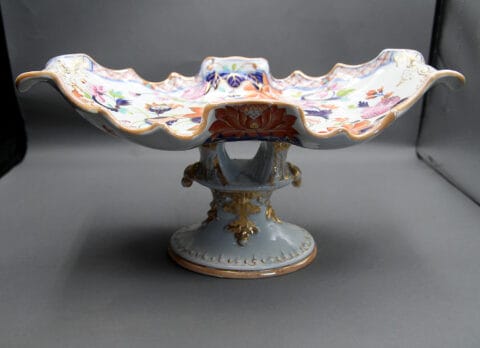
Mason’s Ironstone China, known for its durability and elegant designs, remains a prized collectible among antique enthusiasts. However, with its popularity, the market has seen a rise in reproductions and fakes. Identifying genuine Mason’s Ironstone China requires a keen eye and knowledge of key features, hallmarks, and common reproductions. This guide provides essential tips and techniques to help collectors distinguish authentic pieces from imitations.
Mason’s Ironstone China was first introduced in the early 19th century by the English manufacturer Mason’s. Renowned for its robustness and refined designs, it quickly became popular. Authentic Mason’s Ironstone China features a distinctive blend of beauty and durability, making it highly sought after by collectors.
To identify genuine Mason’s Ironstone China, look for the following characteristics:
One of the most reliable ways to identify Mason’s Ironstone China is through its hallmark. Here’s how to analyze it:
Several reproductions and fakes mimic Mason’s Ironstone China. Here’s how to distinguish them:
Spotting authentic Mason’s Ironstone China requires a combination of knowledge, attention to detail, and careful analysis. By understanding the key features, analysing hallmarks, and being aware of common reproductions, collectors can confidently distinguish genuine pieces from imitations. Whether you’re an experienced collector or just starting, these tips will help ensure that your collection of Mason’s Ironstone China is both authentic and valuable.

Mason’s Ironstone China, renowned for its durability and exquisite designs, remains a treasured collectible among antique enthusiasts. Originating in the early 19th century, Mason’s Ironstone is celebrated not just for its practical uses but also for its artistic beauty. The patterns on Mason’s Ironstone China are reflective of both the period’s design trends and cultural influences. In this article, we’ll explore ten of the most popular Mason’s Ironstone patterns and their significance.
One of the most iconic patterns, Canton, is a nod to the chinoiserie trend that captivated 19th-century Europe. Featuring intricate blue and white scenes of Chinese landscapes and architecture, Canton pattern reflects the fascination with the Far East during the Victorian era. The detailed depiction of pagodas, bridges, and willow trees offers a glimpse into the exotic allure that fuelled trade and artistic expression of the time.
The Water Lily pattern is celebrated for its delicate and elegant portrayal of water lilies and other floral motifs. With its soft, muted colours, this pattern embodies the refined taste of early 19th-century English society. The intricate detailing and serene aesthetic make Water Lily a symbol of both grace and the appreciation of nature, highlighting Mason’s Ironstone’s ability to combine beauty with functionality.
Pink Scroll is distinguished by its intricate, swirling pink patterns set against a white background. This pattern captures the romantic and ornate style of the period, reflecting the growing popularity of pastel colours in domestic décor. The Pink Scroll pattern signifies the era’s fascination with elaborate, yet delicate designs, making it a favourite for those seeking a touch of elegance in their collections.
Indian Tree pattern features vibrant, colourful designs depicting exotic trees, flowers, and birds. This pattern emerged from the Western fascination with Indian motifs, driven by the British East India Company’s influence. The lively colours and intricate details of Indian Tree exemplify the 19th-century obsession with Indian art and culture, making it a vivid representation of colonial tastes and artistic interests.
Old School House pattern offers a nostalgic glimpse into rural England with its pastoral scenes and traditional architecture. This design is characterized by its depiction of quaint village life and historic buildings. It reflects a yearning for simpler times and a deep appreciation for England’s countryside, making it a cherished pattern for those interested in the historical and cultural narrative of the period.
The Mogul pattern is a striking example of Mason’s Ironstone’s embrace of bold and exotic designs. Featuring intricate geometric patterns and rich colours, Mogul is inspired by the opulent art of Mughal India. This pattern reflects the Victorian fascination with exotic cultures and their artistic achievements, showcasing Mason’s ability to incorporate diverse influences into their ceramics.
The Table & Flowerpot pattern is notable for its depiction of table settings and floral arrangements, reflecting the Victorian appreciation for detailed, everyday scenes. This pattern captures the elegance of dining and floral design, illustrating Mason’s Ironstone’s blend of practical and decorative elements. It serves as a testament to the period’s focus on both functionality and aesthetic pleasure in everyday life.
Long-Tailed Bird pattern features elegant depictions of birds in flight, surrounded by lush foliage. This design highlights the Victorian era’s fascination with ornithology and natural beauty. The graceful depiction of birds and their natural habitats makes Long-Tailed Bird a symbol of both artistic finesse and a deep appreciation for the natural world, enhancing the charm of Mason’s Ironstone China.
Chestnut Basket pattern is distinguished by its intricate basket-weave design, often accompanied by detailed floral motifs. This pattern reflects the period’s interest in basketry and its application in decorative arts. The combination of texture and floral elements in the Chestnut Basket pattern showcases Mason’s Ironstone’s ability to merge practicality with ornamental appeal, making it a distinctive choice for collectors.
Indian Grasshopper pattern features exotic insects and floral designs, representing the Victorian era’s fascination with nature and exoticism. The intricate detailing and vibrant colours capture the era’s interest in unusual and foreign motifs. This pattern exemplifies Mason’s Ironstone’s creativity in blending functional ceramics with artistic exploration, making it a notable piece for those interested in unique and culturally rich designs.
Mason’s Ironstone China’s array of patterns offers a fascinating glimpse into the artistic and cultural influences of the 19th century. From the intricate blue and white designs of Canton to the vibrant depictions of Indian Grasshopper, each pattern tells a story of its time. Collectors and enthusiasts appreciate these patterns not only for their beauty but also for their historical significance, making Mason’s Ironstone a cherished part of ceramic history. Whether you’re a seasoned collector or new to the world of antiques, exploring these patterns provides a deeper understanding of Mason’s Ironstone’s enduring appeal.
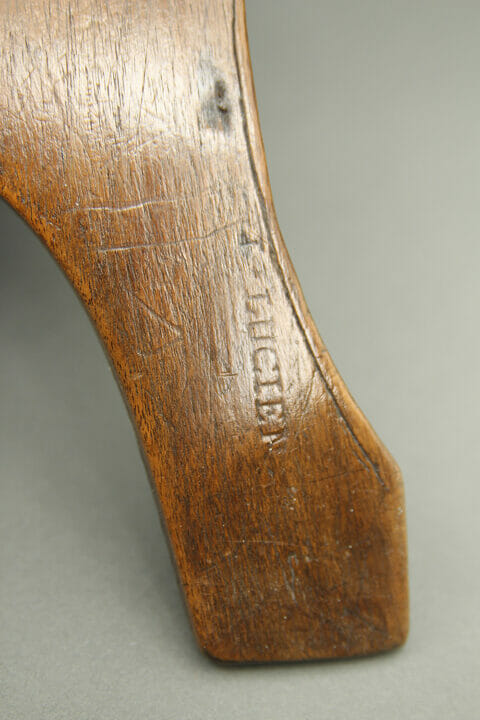
When it comes to antique furniture restoration, few elements are as pivotal and yet as elusive as patina. This subtle layer of wear, age, and history not only tells the story of a piece but also significantly influences its aesthetic value. Understanding and preserving patina is essential for restorers who aim to maintain the historical integrity and visual appeal of 17th and 18th-century furniture.
Patina refers to the natural sheen and surface characteristics that develop on wood, metals, and other materials over time. For furniture, this includes the subtle colour changes, surface textures, and minor imperfections that accumulate through years of use. Unlike modern finishes, which are often uniform and pristine, patina embodies the lived experience of an object, imbuing it with a rich, authentic charm that cannot be replicated artificially.
In antique furniture, patina is a complex interplay of various factors, including the type of wood, the environment, the handling over centuries, and the original finish applied by the craftsmen. The aging process can enhance the depth of colour in the wood, deepen the grain patterns, and create a warm, inviting glow that is highly prized in restoration circles.
Preserving patina is not just about maintaining the piece’s appearance; it is about safeguarding its historical and cultural significance. Here are several reasons why patina is so crucial in the restoration process:
While the benefits of preserving patina are clear, achieving this in practice can be challenging. Restorers must balance the desire to maintain the original appearance with the need to stabilise and repair the furniture. Here are some key considerations:
Restoring and preserving patina involves a combination of traditional craftsmanship and modern techniques. Here are some practices commonly employed by restorers:
In the world of antique furniture restoration, patina is not just a surface feature – it is a vital component of the piece’s identity. By understanding its significance and employing careful, respectful restoration techniques, conservators can ensure that the beauty and history of 17th-century furniture and 18th-century furniture are preserved for generations to come. The challenge lies in balancing the preservation of original patina with the need for repair, ensuring that each piece remains a living testament to its rich past.
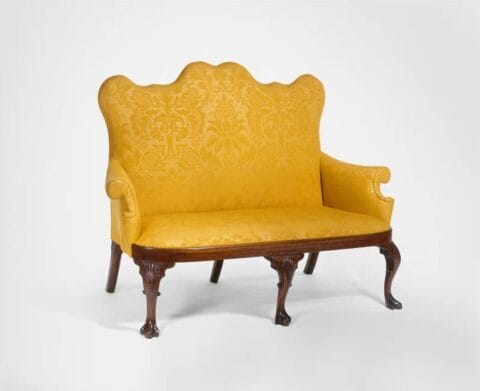
The 18th century was a period of rich cultural evolution and artistic expression, marked significantly by its distinctive furniture styles. This era, often regarded as the golden age of furniture design, saw the emergence and flourishing of several stylistic movements, each contributing unique characteristics to the world of decorative arts. From the elegance of Queen Anne to the opulence of Rococo, and the refinement of Neoclassicism, 18th-century furniture encapsulated the tastes, technological advancements, and social aspirations of its time.
The early part of the 18th century was dominated by the Queen Anne style, named after the reigning monarch of England. Queen Anne furniture is celebrated for its graceful lines and understated elegance. The hallmark of this style is the cabriole leg, characterised by a gentle S-shaped curve which often terminates in a pad, trifid, or club foot. This period also saw the widespread use of walnut as the preferred wood, prized for its fine grain and rich colour.
Ornamentation in Queen Anne furniture was generally restrained. The use of veneers and inlays became more sophisticated, and the surfaces of tables, chairs, and cabinets were often decorated with intricate marquetry. The emphasis was on proportion and comfort, with chairs featuring high, hoop-shaped backs and cushioned seats. This style’s simplicity and elegance made it enduringly popular and influential in both Britain and its American colonies.
The Rococo style, which originated in France, brought a dramatic shift in the aesthetics of furniture design. Rococo, also known as the Louis XV style, is renowned for its exuberance, asymmetry, and ornamental richness. Furniture pieces from this period are often ornate, with intricate carvings and elaborate decorations.
The Rococo style favoured lighter woods such as oak, beech, and cherry, which were often gilded or painted. Chairs and settees featured sinuous lines, with cabriole legs, scrolled arms, and richly upholstered seats. Common motifs included shells, flowers, and acanthus leaves, reflecting the period’s fascination with natural forms. This style was less formal and more playful compared to its predecessors, emphasising comfort and luxury.
The commode, a type of chest of drawers, became a quintessential piece of Rococo furniture. These were often elaborately decorated with ormolu mounts, marquetry, and lacquered surfaces, showcasing the high level of craftsmanship and the luxurious taste of the time. Rococo’s influence extended beyond France, inspiring furniture designs across Europe.
Thomas Chippendale, an English cabinetmaker, gave his name to one of the most iconic furniture styles of the 18th century. The Chippendale style is notable for its blend of Gothic, Chinese, and Rococo elements, reflecting the eclectic tastes of the period. Chippendale’s designs were published in his seminal work, “The Gentleman and Cabinet-Maker’s Director” (1754), which served as a comprehensive guide for craftsmen and patrons alike.
Chippendale furniture is characterised by its attention to detail and high-quality craftsmanship. The style often features elaborately carved legs and backs, with motifs such as latticework, fretwork, and scrolls. Mahogany became the wood of choice during this period, valued for its durability and ability to be finely carved.
Chairs in the Chippendale style often have intricate back splats, with pierced and carved designs. The “ribbon back” chair, featuring a backrest resembling intertwined ribbons, is a quintessential example. Chippendale cabinets and desks are equally ornate, frequently adorned with decorative brass hardware and elaborate inlays.
The Hepplewhite style, named after the English cabinetmaker George Hepplewhite, emerged in the late 18th century, characterised by its elegance and lightness. Hepplewhite’s designs, published posthumously in “The Cabinet-Maker and Upholsterer’s Guide” (1788), emphasised graceful lines and delicate proportions.
Hepplewhite furniture is distinct for its shield-shaped chair backs, tapered legs, and refined ornamentation. In contrast to the robust forms of earlier styles, Hepplewhite designs favoured a more slender and delicate aesthetic. Satinwood, mahogany, and painted finishes were commonly used, often with contrasting veneers and inlays.
The use of neoclassical motifs, such as urns, swags, and festoons, reflected the period’s admiration for classical antiquity. Hepplewhite furniture often featured inlay work with contrasting woods, creating subtle and sophisticated decorative effects. The style’s emphasis on refinement and grace made it highly popular among the English gentry and affluent American colonists.
Following closely on the heels of Hepplewhite, the Sheraton style, named after the English furniture designer Thomas Sheraton, brought further refinement and elegance to 18th-century furniture design. Sheraton’s designs, outlined in his publication “The Cabinet Maker’s and Upholsterer’s Drawing Book” (1791), were characterised by a focus on straight lines, symmetry, and classical proportions.
Sheraton furniture is often identified by its slender, rectilinear forms and use of light woods such as satinwood and tulipwood. The style favoured painted and inlaid decorations, with motifs inspired by Greek and Roman art. Typical features include tapered legs, reeded and fluted details, and delicate veneers.
Sheraton chairs are notable for their rectangular or square backs, often with splats featuring intricate patterns. The overall aesthetic is one of elegance and restraint, with a focus on functionality and comfort. Sheraton’s influence extended into the early 19th century, bridging the gap between the late 18th-century neoclassicism and the emerging Regency style.
The 18th century was a transformative period for furniture design, marked by a succession of distinct styles that each left an indelible mark on the decorative arts. From the graceful lines of Queen Anne to the exuberant ornamentation of Rococo, the eclectic Chippendale, and the refined elegance of Hepplewhite and Sheraton, each style reflected the cultural and aesthetic values of its time. These diverse yet interconnected styles collectively contributed to a rich legacy of craftsmanship and design, influencing furniture makers and collectors for centuries to come. The enduring appeal of 18th-century furniture lies in its combination of beauty, functionality, and historical significance, making it a cherished element of both antique collections and modern interiors.
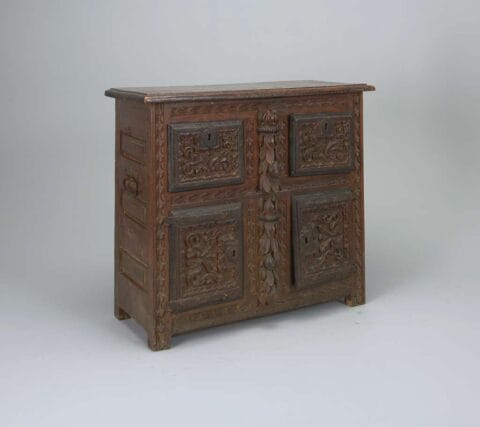
The 17th century was a period of significant transformation in the world of furniture design, characterised by an exuberant blend of artistic creativity and functional innovation. This era, known for its Baroque style, brought about an unprecedented level of intricacy and grandeur in furniture making. The distinctive features of 17th-century furniture reflect the social, cultural, and artistic currents of the time, making these pieces valuable both as functional items and as historical antiques.
One of the most striking features of 17th-century furniture is its ornate carvings and decorative elements. Furniture makers of this period, heavily influenced by the Baroque style, incorporated intricate designs that often included motifs such as acanthus leaves, cherubs, mythological figures, and floral patterns. These carvings were not merely ornamental but also served to showcase the craftsman’s skill and the owner’s wealth and social status.
In addition to carvings, furniture pieces were frequently adorned with gilding and inlays. Gilded accents, using gold leaf, added a luxurious touch to items such as cabinets, chairs, and tables. Inlays of contrasting materials like ivory, mother-of-pearl, and tortoiseshell created intricate patterns and scenes, further enhancing the visual appeal of the furniture.
The use of high-quality and exotic materials was another hallmark of 17th-century furniture. Woods such as walnut, oak, and ebony were commonly used due to their durability and beauty. Additionally, the period saw the introduction of veneers and marquetry techniques, which allowed craftsmen to create complex designs and patterns using thin slices of wood and other materials.
Marquetry, in particular, became a popular decorative technique. It involved creating images or patterns by fitting together pieces of veneer, often from different types of wood and sometimes incorporating materials like metals and stones. This technique was used to adorn tabletops, cabinet doors, and other flat surfaces, adding an element of artistry to functional furniture.
The 17th century also witnessed significant innovations in the structure and functionality of furniture. One of the most notable developments was the evolution of the chest of drawers. Prior to this period, storage was typically provided by large chests. The chest of drawers offered a more organised solution, with multiple levels of storage accessible through individual drawers. This innovation not only improved functionality but also allowed for more elaborate surface decoration.
Cabinets and cupboards also evolved during this period, becoming more complex and featuring multiple compartments, shelves, and secret drawers. These pieces were often used to store valuable items and were designed to be both secure and decorative. The complexity of these furniture items reflected the growing emphasis on privacy and security in domestic spaces.
While the Baroque style dominated much of Europe, regional variations in furniture design reflected local tastes, materials, and cultural influences. In France, the furniture of Louis XIV epitomized the grandeur and opulence of the Baroque period. French furniture was characterised by its heavy use of gilding, elaborate carvings, and rich fabrics such as brocade and velvet. The influence of the French court set trends across Europe, making French furniture highly desirable.
In England, the early 17th century was marked by the Jacobean style, which was more restrained compared to the later Baroque influence. Jacobean furniture was robust and often featured geometric shapes and strapwork. As the century progressed, the Restoration period brought a more refined style, known as the Carolean or Restoration style, which incorporated elements of Baroque design while maintaining a distinctive English character.
Italian furniture, heavily influenced by the Catholic Church and the Counter-Reformation, was characterized by its dramatic and often theatrical appearance. Large, imposing pieces with bold carvings and rich decorations were common, reflecting the church’s influence on art and culture.
The 17th century also saw the development of specialised furniture pieces designed for specific rooms and functions within the home. Dining rooms, for example, featured large tables and high-backed chairs, often elaborately decorated to reflect the importance of social gatherings and feasts.
Bedrooms were furnished with large, often canopied beds, which were the focal points of these private spaces. These beds were usually highly decorative, with ornate headboards and luxurious fabrics. Storage furniture such as wardrobes and chests of drawers became more prevalent in bedrooms, reflecting the growing importance of personal privacy and organisation.
Living spaces, or salons, featured a variety of seating options, including armchairs and settees, designed to accommodate social interactions. These pieces were often upholstered with rich fabrics and adorned with carvings and gilding, emphasising comfort and elegance.
The distinctive features of 17th-century furniture are a testament to the era’s artistic and cultural richness. From the intricate carvings and luxurious materials to the structural innovations and regional styles, 17th-century furniture reflects a time of great creativity and craftsmanship. These pieces not only served functional purposes but also conveyed the social status and refined tastes of their owners. Today, they continue to be admired for their beauty and historical significance, offering a glimpse into a bygone era of opulence and artistic achievement.